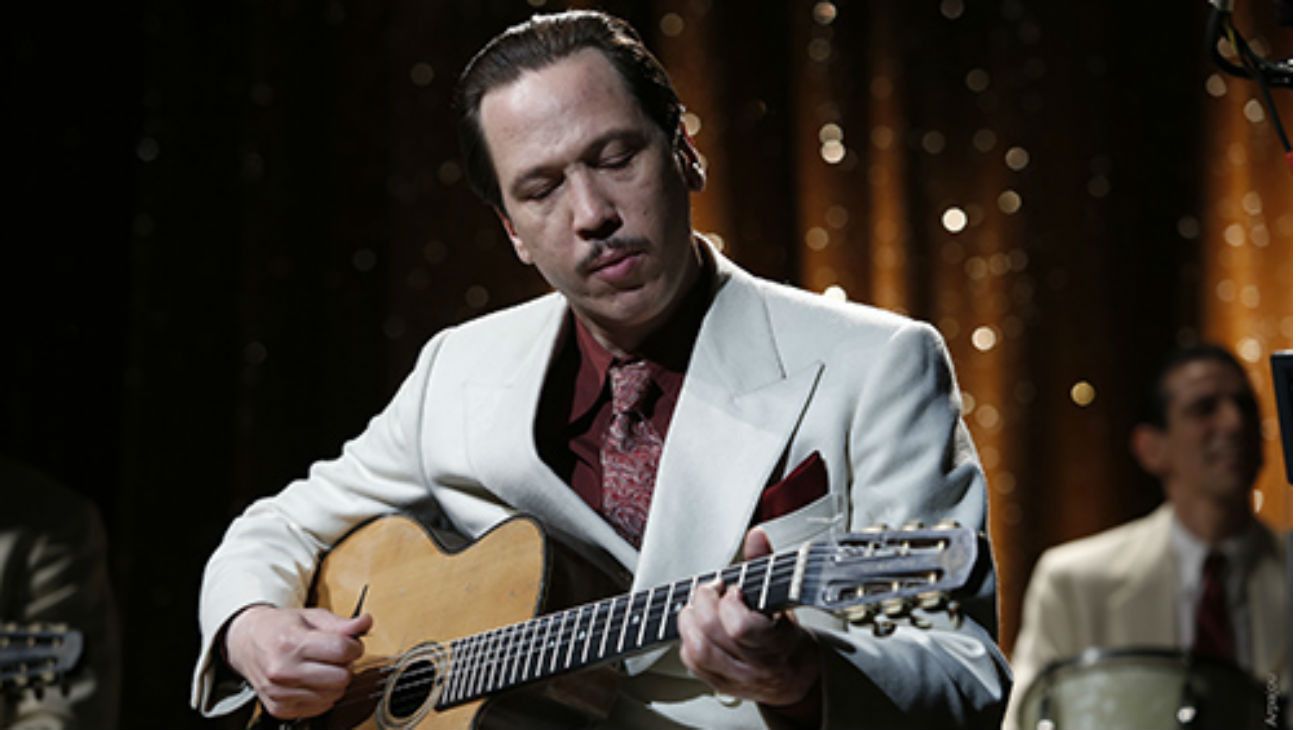For those experiencing Django Reinhardt‘s brand of swing jazz for the first time, the World War II drama “Django” will feel like a revelation in its early scenes. As played by Reda Kateb, the guitarist’s fingers slide over the strings and the sounds still feel fresh, 70 years later. But “Django” struggles to maintain a consistent rhythm throughout its 115 minutes, varying between energetic highs and dull lows. A concert he performs in the third act is a particular highlight, combining the fizzy swing of his music with the danger of being surrounded by Nazis, but that level of spectacle and crisis can’t be sustained. If every scene could have the verve of the musical performances, the audience would be just as rapt as Reinhardt’s were, but each time a final note of a song is played, we’re left counting down until the next piece begins.
The film sets up its harsh world and historical context in its first few minutes. In 1943 in the Ardennes forest, a group of Romani musicians are entertaining their caravan before being brutally murdered by Nazi soldiers. “Django” cuts to Paris, where Reinhardt – a Romani himself – prefers fishing on the banks of the Seine to being on time for his own concert with his band, the Quintet du Hot Club de France. When he does finally show up, he plays for a packed theater in the occupied capital, and his extraordinary talent is quickly visible to both Parisian audiences and those watching the film.

Reinhardt insists that he isn’t political, but he struggles to maintain those feelings as he draws closer to his beautiful blonde muse Louise (Cécile de France), to the frustration of his wife, Naguine (Bea Palya). When the Nazis tell Reinhardt that he must play in Germany, they share a list of rules that demonstrate a lack of knowledge of his innovative style: no lengthy solos, no more than 5% syncopation and no tapping your feet. The last rule is enforced by Reinhardt wearing a string of bells around his ankle. Louise helps Reinhardt and Naguine escape to the Swiss border with Reinhardt’s mother, Negros (Bim Bam Merstein), but he is never far from Nazis’ eyes.
This is less an all-encompassing biography than a drama that focuses on a small portion of the artist’s life, but it’s unfortunate that “Django” rarely is as compelling as it should be, given the setting and the subject matter. Etienne Comar makes his directorial debut here after writing scripts for “Mon roi” and “Haute Cuisine,” and he struggles to keep the audience’s interest during the movie’s quieter moments. Between a World War II film and a musical biopic, it straddles two genres that often affect the audience, but the result here is rarely stirring.

Kateb doesn’t bear a particularly close physical resemblance to the movie’s subject, but given that “Django” will likely be the most many audiences will experience of the musician, it’s not a fatal flaw. Instead, the nuanced performance he gives adds emotional resonance to the film, and he capably communicates the guitarist’s talent. The movie is also animated by practically every appearance by the lively Merstein, who brings a sense of humor to the largely serious film.
“Django” deserves praise for introducing most viewers to both the musician and to the plight of the Romani people during World War II, but when Reinhardt’s fingers aren’t dancing across guitar strings, it has all the vitality of an educational film shown by a substitute teacher. It comes alive in those fleeting moments, but they are too infrequent to keep audiences engaged. [C+]

